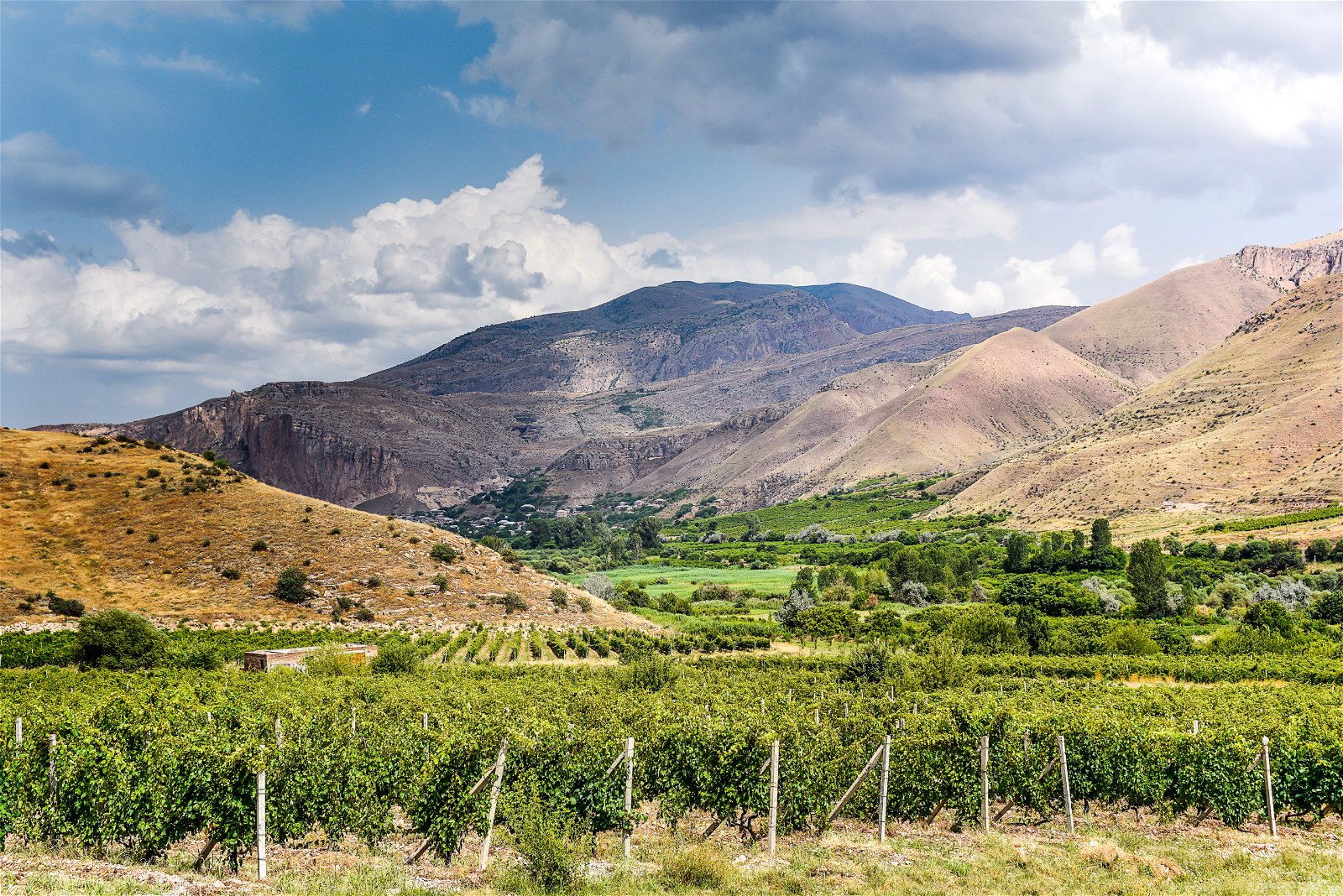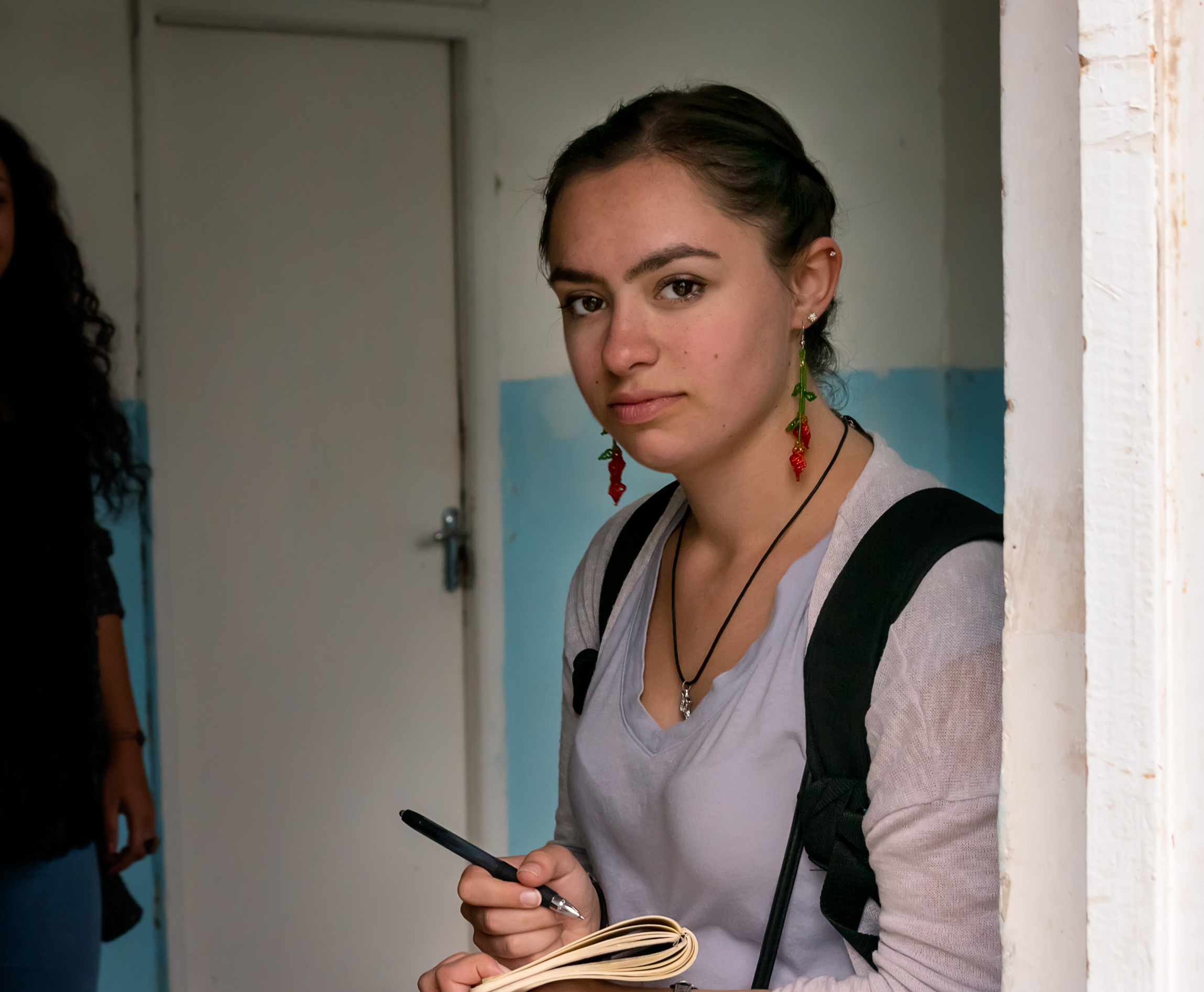“In ten years, Armenia will be a totally different winemaking region, and have its own niche in the global wine market,” says Aimee Keushguerian, as we sip red wine, rich with the earthy flavors of Armenian grapes, poured straight from the huge steel barrels at her family’s WineWorks facility.
Tracing my mental map of the few stores in my hometown of Chicago where I can find Armenian wine, I can’t help but think that’s a bold statement. I am lost in thought for a moment, daydreaming of a world where Armenian wines are common enough that I could just walk down to the grocery store and buy a bottle to share with friends. But Aimee speaks with an easy confidence that makes me excited to find out how she is going to make it happen.

As many Armenians know, our homeland is home to the world’s oldest winery, preserved in the darkness of an ancient cave. The Areni-1 Winery was discovered in 2007 when archaeologists uncovered 6100-year old clay karas jugs still intact, buried in the soil as if ready to age another year of wine. Although Western Europe is known as the center of wine today, at one time Armenia was the wine capital, selling wine to Europe through Babylon. The region of Vayots Dzor, where the lush vineyards of Areni lay, is still the center of Armenia’s wine industry. The town and region are ready to welcome visitors and customers every year, showcasing more than six millennia of wine culture.
Although Armenia’s ancient wine industry continues to persevere, winemakers have had their share of hardship as Armenia was conquered by one empire after another. Most recently, during the Soviet period, Armenia was designated as the brandy-producing country with Georgia as the center of wine production. As a result, many vineyards and businesses were destroyed, and Armenia’s wine industry became a shadow of its former prominence. Today, few people know of Armenian wine, and it can be hard to find internationally.
Armenia’s wine industry remains largely unrecognized, but its authenticity has drawn diasporan winemakers from around the world to join in the project of rebuilding the industry.
“There are many firsts happening here,” said Aimee, “Like the first barrel fermented Voskehat and the first traditional method sparkling Armenian wine. It’s very exciting to be able to experiment from the beginning.”

Aimee moved to Armenia for her first harvest in 2016, after her father Vahe invited her to come work in the industry. Vahe moved to Armenia in 2009 after having worked in the wine industry in Italy and California. He was largely responsible for the beginning of the wine industry renaissance.
In 2011, Vahe founded WineWorks. The company began as a wine consulting firm, but now operates as a winery incubator, where clients bring grapes from different provinces around Armenia to be processed. I visited WineWorks at their facility, a huge building in the dry hills of Yerevan, complete with a warehouse of steel tanks, barrels, bottling facilities, and even a huge map of grape varietals throughout all of historic Armenia. In this building, they offer a variety of services, from the winemaking process itself to viticulture, and marketing and management support. WineWorks is a crucial hub in Armenia’s up-and-coming wine industry, and came at an opportune time, when companies like Zorah and Karas were beginning to produce Armenia’s first high-quality, internationally competitive wines.
“It’s very scientific here,” says Aimee, “You can’t fake it. There is evidence that vitis vinifera, the main wine grape species worldwide, originated in this area.”

Many ancient varieties of this grape species have been neglected over the years, but WineWorks has a project to find them, going to farmers and family vineyards to see what individuals have preserved in their family vineyards. They have found a variety, including the Lalvari varietal from Tavush and the Khndoni from Vayots Dzor, which are essential to their winemaking process.
WineWorks’ first client was the Yacoubian-Hobbs winery, a collaboration between the Yacoubian family and internationally-renowned winemaker Paul Hobbs. Hobbs has been called the “Steve Jobs of the Wine Industry” by Forbes and is famous for finding innovative ways to approach winemaking, always searching to bring out the spirit and quality of wines. He partnered with the Yacoubian family to work in the birthplace of wine, with vineyards right around the historic Areni-1 cave. Their project has been very successful, producing exquisite, and uniquely Armenian wines for the international market.

WineWorks partners with a number of other brands as well, and the company has expanded so much that they have outgrown their Yerevan facility. As they prepare for next year’s harvest, Aimee and the rest of the WineWorks team are busy moving into a new, state-of-the art winemaking and wine-tasting facility in Vayots Dzor, which Aimee calls “the Napa of Armenia.” “The facility is in the ancient winemaking village of Areni, and will allow tourists to learn about its history in a discovery center equipped with clay amphorae and stainless steel tanks.”
This is not WineWorks’ first foray into tourism, however. Aimee tells us about their current project with the OneArmenia crowdfunding platform, supporting local winemakers in Armenia’s rural areas. This work is especially important to them, because, with the industry and culture growing fast, it is easy for small farmers to get left behind.
“Farmers are often persuaded to sell their land to bigger companies,” said Aimee, “but we need to keep them in the industry.”
This can often be challenging, due to widespread local poverty, unfamiliarity with international business practices and deeply entrenched ideas and practices from the Soviet era, but WineWorks is continually looking for new and innovative ways to work with local farmers.
WineWorks has worked with a variety of organizations including the UN, OneArmenia and Texas A&M University to do this. Its partnership with OneArmenia is an ongoing project that provides local grape-growing families access to training sessions, updated equipment, marketing and branding coaching, and a creative and sleek tasting room called a WineCube, set directly in their vineyards. While it is generally very hard for Armenian families to compete with large companies, this added tasting room provides them with a new opportunity to offer tourists a unique experience, drawing on the Armenian culture of hospitality and connection with the land. This partnership has already helped one family to succeed in launching the Momik winery in Areni and is hoping to empower more grape growers in the future.
Aimee and Vahe Keushguerian partner with a multitude of different projects and organizations to invest in Armenia’s wine industry, but they are also a family of entrepreneurs. In addition to running WineWorks, Vahe started building a winery for his Keush brand, which uses indigenous Armenian Voskehat, Areni and Khatouni grapes to make beautiful sparkling wines. Sparkling wines are new in Armenia, but Aimee describes them as the perfect novelty for the next generation, synonymous with celebratory occasions and good times. They use grapes from some of the highest elevation vineyards in the world to produce wines using the méthode traditionelle.
Aimee originally came to Armenia to manage Keush but has recently started her wine company called Zulal, the Armenian word for “pure.” The wines are made to bring out the unique properties of Armenian indigenous grape varieties and share the beauty of Armenia’s wine culture in a bottle.
“I needed my own project,” Aimee said. “I’ve been managing Keush and other projects in Armenia for three years, but eventually I realized that I am an entrepreneur.”
She explained everything to us in vivid detail, from the chaos and excitement of the harvest, to the machines that are used to hand select the grapes for quality and the complexities of reaching precise temperatures during aging before the wine is bottled.
“So many people want to be involved with Armenian wine,” she said. “We often discourage it, because there’s a lot of knowledge and expertise you need to create a quality wine. You can’t just do it romantically or throw money at it.”
As a powerhouse of energy and ideas, Aimee knows that better than anyone, and her work has paid off. When she recalled the surreal moment of seeing the wine after it was bottled, she exclaimed, “Man, I have a wine company now!”
Aimee’s enthusiasm for the rebirth of Armenia’s wine industry is contagious and palpable among full tanks and cases of newly bottled wines and peaceful strolls through the lush green vines of Armenia’s wine country. I felt the pride during toasts at small home wineries and when I first laid eyes on the remains of the world’s oldest wine jugs. I also remembered the first time I saw Armenian wine in a store back home in Chicago, and I am excited for what is to come.
As Aimee said, “Everything is looking positive right now.”



It is a very exciting time for winemaking in Armenia. Every year, new professional facilities are starting. We have met some remarkable entrepreneurs who are both from the diaspora and from Armenia. There seems to be no greater example of the entrepreneurial skills of Armenians than the wine industry in the last ten years. Thank you for this informative article.
“no greater example of the entrepreneurial skills of Armenians than the wine industry in the last ten years”… except for the IT industry, which is amazing. And I say that as an IT professional myself.
It gives me great joy to read such stories of Armenians from around the world. I live in Melbourne, Australia and crave for good Armenian wine (red), which we are unable to purchase locally.
Regards
Razmick
I think the crowd funding you mention to enable smaller wineries to build tasting rooms is a really good idea. I visited Armenia with my husband last year and it was very difficult to find a vineyard to visit. Smaller, local vineyards are likely to appeal to tourists and promote Armenian wine to foreigners at the same time. I hope to be able to visit some of these family run wineries on our next visit.
The wines being produced at WineWorks are truly impressive. And Aimee is a formidable Ambassadress, sincere and compelling. We carry several at The House of Glunz in Chicago.
How can we buy armenian wines in america ?